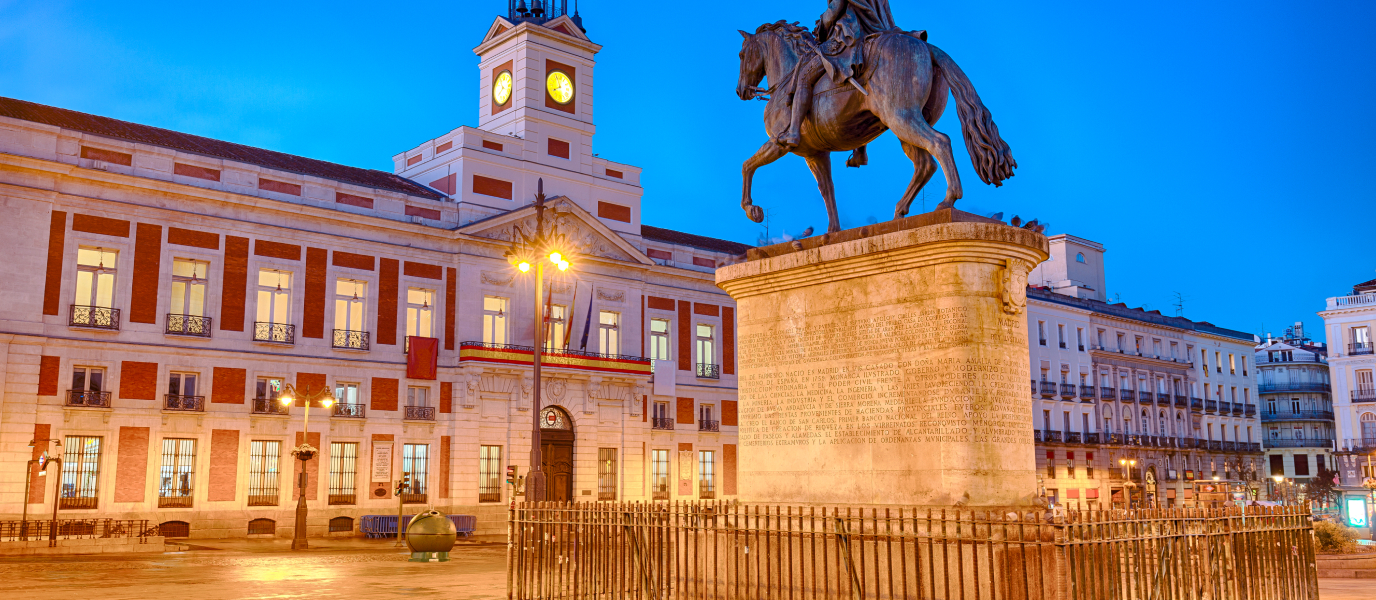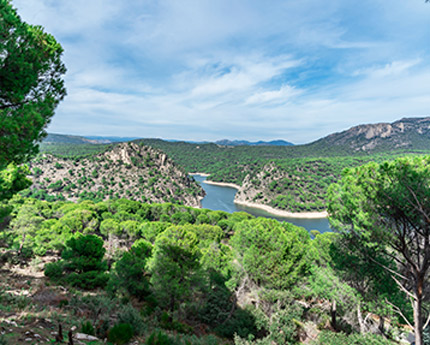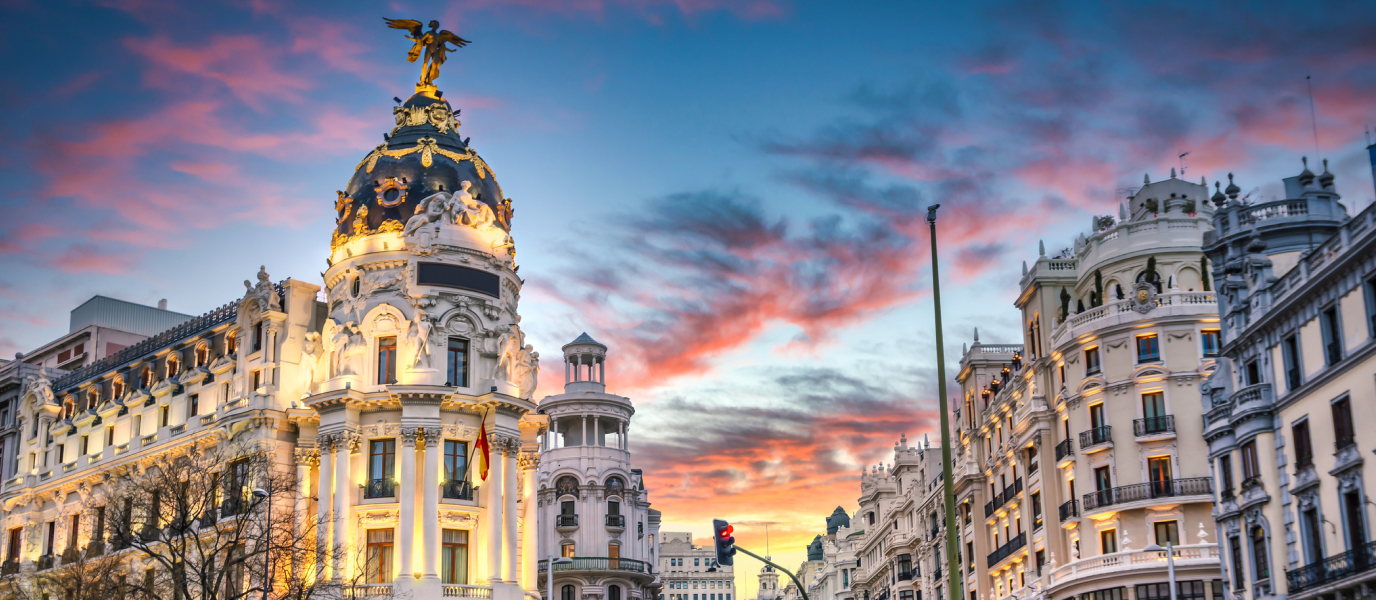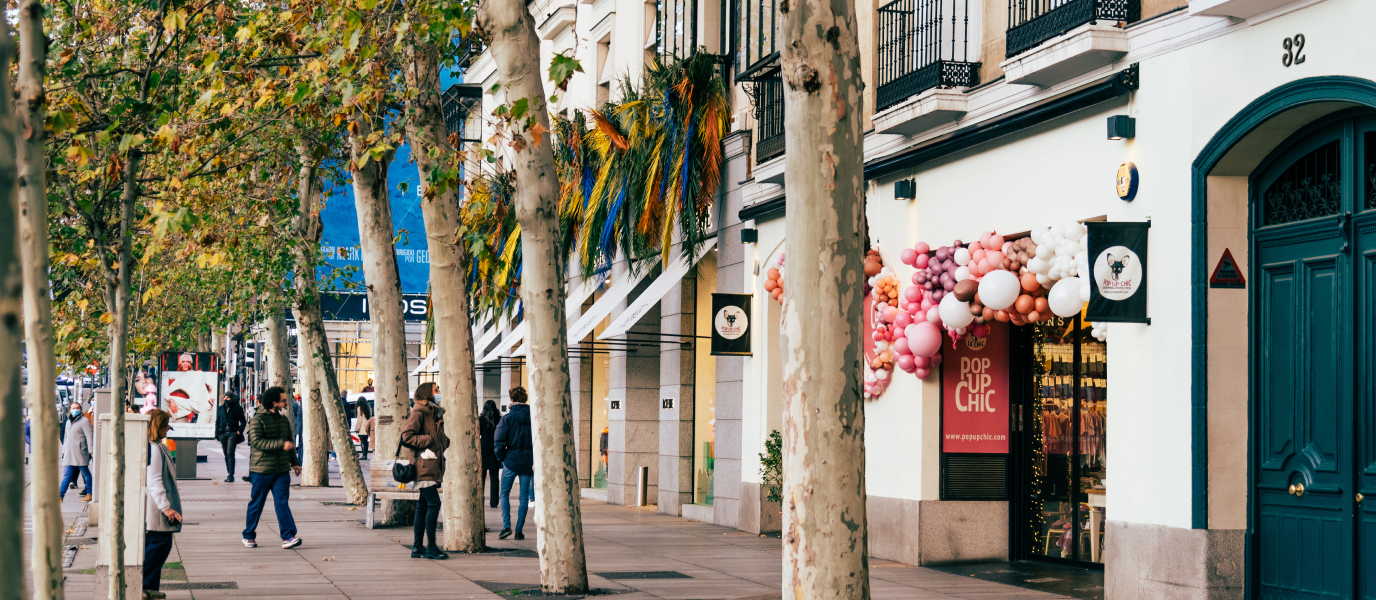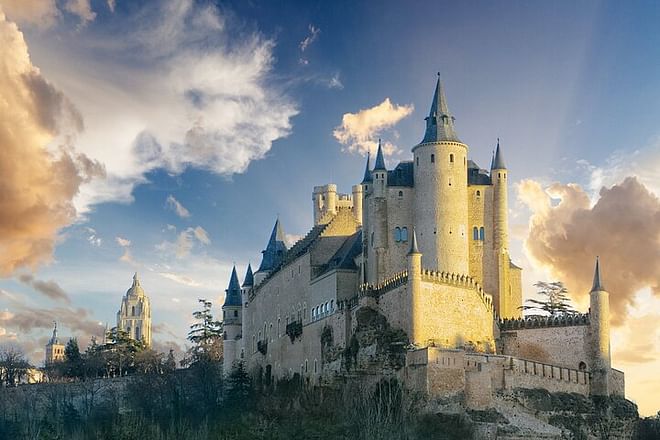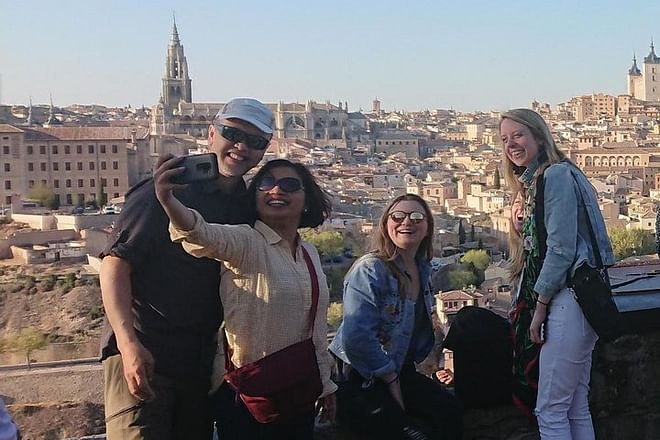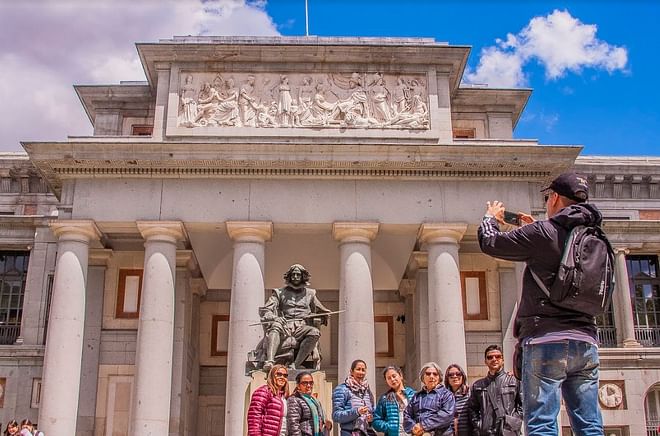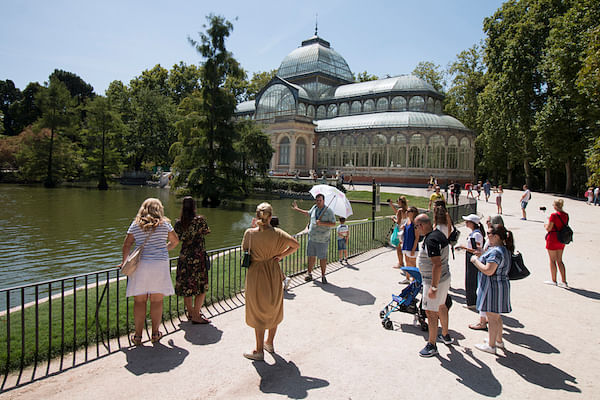It’s practically impossible to take a stroll through the centre of Madrid without ending up in the Puerta del Sol. It’s the crossroads of the capital’s busiest thoroughfares, including Alcalá, Arenal, and the bustling shopping street of Preciados.
From a mere gateway to the city, to its very centre
Even though these days we consider the Puerta del Sol to be the centre of Madrid, it wasn’t always that way. In fact, in the fifteenth century, it was simply a gateway in the walls that ringed the city, its name taken from the sun carved in bas-relief that adorned it.
Four centuries later, in 1768 to be exact, the square’s most emblematic building was erected: the Casa de Correos, which now houses the headquarters of the Presidency of the Community of Madrid. However, it wasn’t until the nineteenth century that the Puerta del Sol grew to its current size and took on its semi-circular shape. That was the result of a decree which, in 1856, ordered the urban space to be broadened and redesigned. This was done between 1859 and 1868, under the direction of the architects Lucio del Valle, José Morer and Juan Rivera, who—taking the Casa de Correos as a starting point—visually enhanced its dominance of the space by making the opposite side of the square concave.
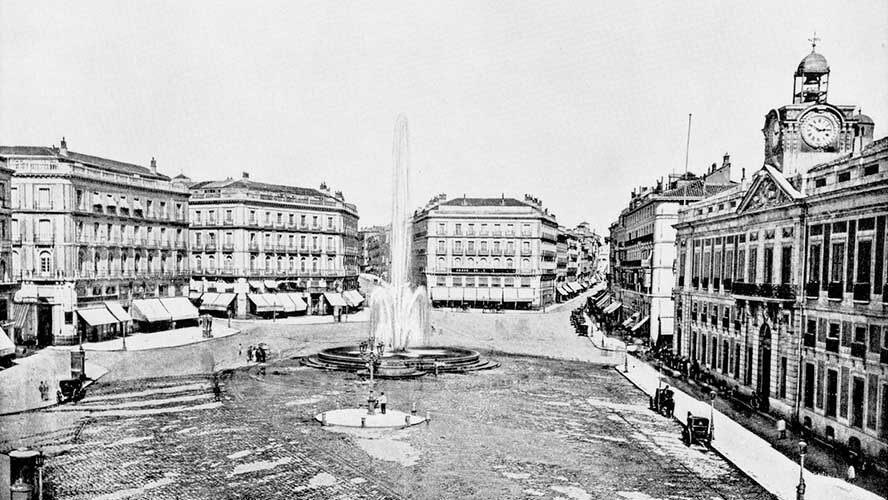
During the twentieth century, more changes were made, such as the installation of the two fountains that are still standing today. At the same time, the square was reorganised, with the sculpture of Charles III being placed in the centre.
The Puerta del Sol has seen various important historical events unfurl, such as the proclamation of the Second Republic in 1931.
The sculptural heritage of the Puerta del Sol
The Puerta del Sol is home to three sculptures, all of which are of great significance for the city of Madrid.
- El Oso y el Madroño (The Bear and the Strawberry Tree). This statue, created in 1767 by Antonio Navarro Santafé, has become one of the city’s most iconic monuments. Madrilenians often arrange to meet here as it’s central and easily recognisable. The sculpture depicts a wild bear standing up on its hind legs, leaning its two paws on a strawberry tree and sniffing at its fruit. The scene appears on the city’s coat of arms.
- The Equestrian Statue of Charles III. This one might not have captured the imagination of the public to quite the same extent, but its central position represents how important Charles III, who has gone down in history as ‘Madrid’s best mayor’, was to the city. The fondness felt for this monarch is the result of the fact that during his reign he strongly encouraged building in the city, and so is credited as being the architect of modern Madrid. The statue is a bronze reproduction of the one made by Juan Pascual de Mena which is preserved in the Real Academia de Bellas Artes de San Fernando, very close to the Puerta del Sol.
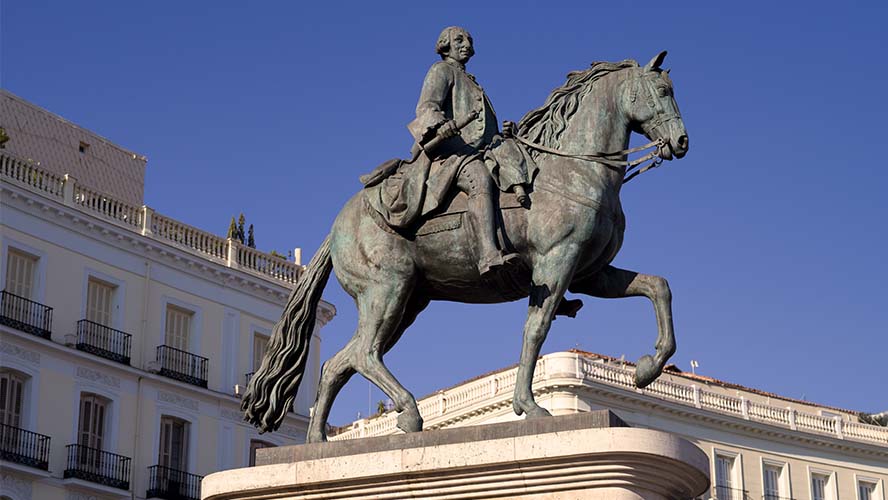
- The Mariblanca. This statue of a woman and a boy, situated at the beginning of Arenal street, which begins at the Puerta del Sol and stretches out in the direction of the Royal Palace, often goes unnoticed, mainly thanks to its modest dimensions. It is, in fact, the replica of a statue that crowned a fountain that stood on the very same spot. You can see the original in the Casa de la Villa.
The centre of the celebrations: the clock of the Puerta del Sol
Every year on the 31st of December, thousands of Madrilenians throng to the square to see out the year listening to the chimes of the legendary clock of the Puerta del Sol. The clock sits atop the Casa de Correos, in a small tower designed specifically for the purpose.
The story of the clock of the Puerta del Sol is an interesting one, as it was gifted to the city by a clockmaker from León, José Rodríguez Losada. Apparently, the clocks that had presided over the square in the past were too prone to malfunctioning. In fact, the constant problems meant it became a running joke amongst Madrilenians, who claimed they could never trust the time displayed on the clock face. So, Losada, who was at that time living in London, solved the problem by designing a complex mechanism that would take him three years to complete and would be unveiled in 1866 by Queen Isabell II.
Km 0 and the Tío Pepe sign
Before leaving the Puerta del Sol, there are two other emblematic sights you’ve got to see.
- The Km 0. This simple plaque the size of a flagstone might look simple, but the Kilometre Zero is one of the most photographed spots in the square. Why? Well, it symbolises the point at which the country’s six radial roads begin. These connect the capital to Galicia, Extremadura, Andalusia, the Basque Country, Catalonia and Valencia. It also represents the symbolic centre of the city, as streets are numbered from 0 depending on which end is closest to the Puerta del Sol.
- The Tío Pepe sign. The light-up sign advertising Tío Pepe, the famous brand of sherry, is, unquestionably one of the capital’s most characteristic sights. So much so that the City Council, who should technically have removed it in line with rules on light pollution, made an exception because of its symbolic value for Madrilenians.
You can’t understand a city like Madrid without discovering the place where it all begins. Its epicentre. Its beating heart.




































































